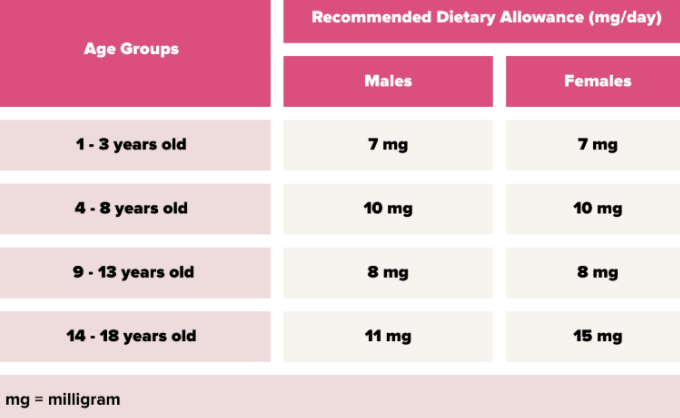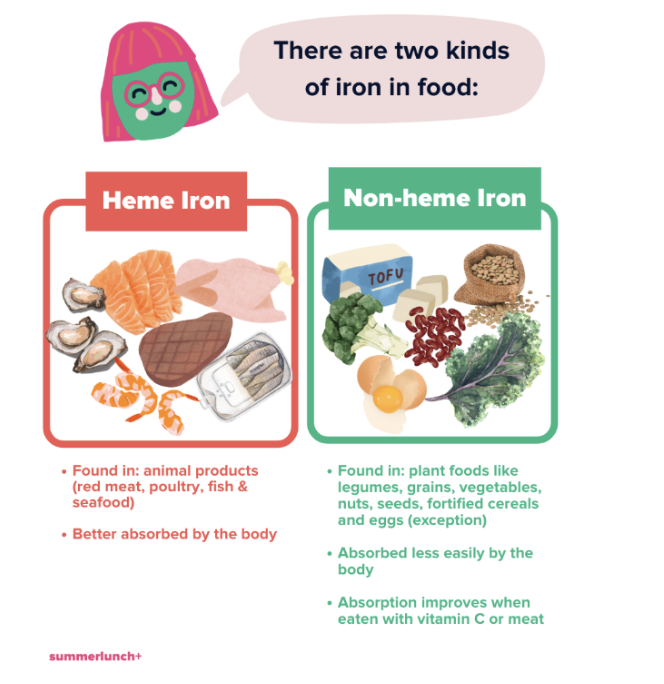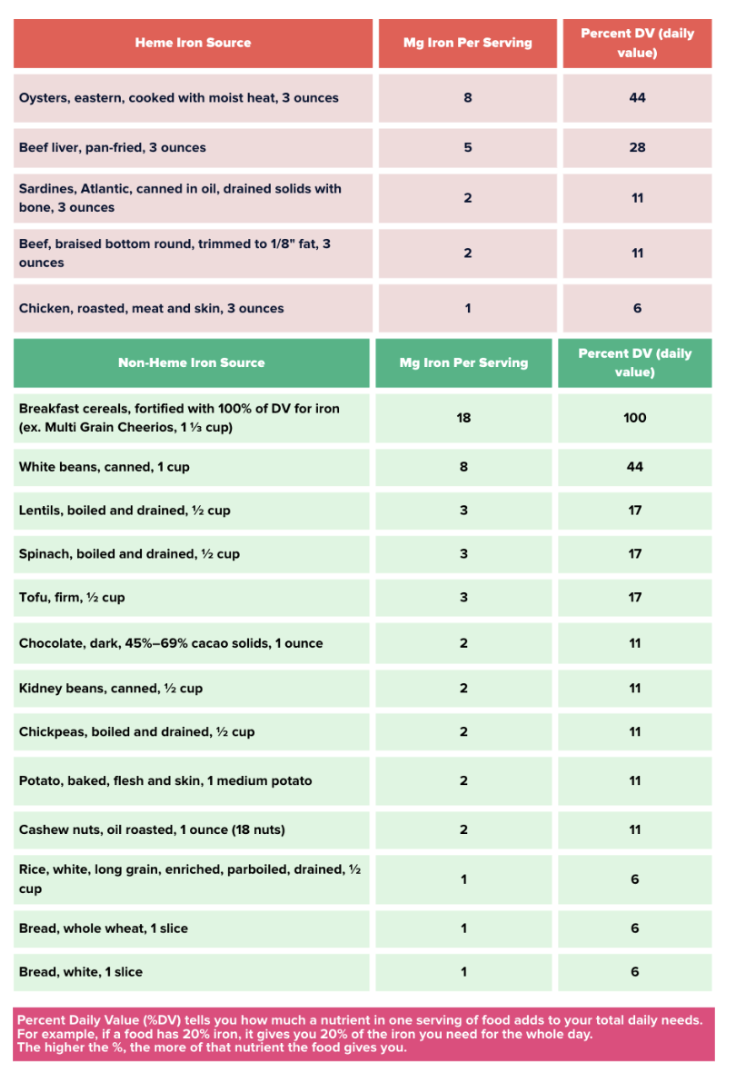Dietary Iron
You pack your child’s lunch with care, maybe a sandwich, some fruit, a few veggies, a little treat. The lunchbox zips shut, and off they go, fuelled for the day ahead. You’re doing your best to give them what they need to grow, learn, and thrive. But even for the most thoughtful parents, one important nutrient often gets overlooked: good old iron.
Here’s what might surprise you: iron deficiency is the most common nutritional deficiency in the world—and yes, it affects kids in Canada, too.
The good news?
With a few smart food choices and simple swaps, it’s easier than you think to work more iron into meals.
Next up: what iron does, how to spot low levels, and how to add more, especially if your family eats mostly plant-based. Let’s dig in (yes, to the meat and potatoes… and the lentils, too)!
What is Dietary Iron, and Why is it Important?
Iron doesn’t come with bright packaging or catchy slogans but behind the scenes, it’s a mineral doing some heavy lifting in your child’s body.
Iron helps make haemoglobin, which carries oxygen through the blood, and myoglobin, which stores oxygen in the muscles.
It fuels their energy for play, helps them focus at school, and supports healthy growth.
It also helps build strength and keeps their immune system ready to go.
Factors That Raise Iron Needs
Kids grow fast! And during those big growth spurts, their iron needs shoot up. Without enough iron in their diet, it’s easy to fall behind.
Your child might also be at risk for low iron if they:
Have a small appetite
Are a picky eater
Follow a vegan, vegetarian or mostly plant-based diet
Are a teen who’s started menstruating
Iron needs add up quickly, and when the body doesn’t get enough, it starts to show. Up next: how to spot the signs.
Iron Deficiency: What to Watch For
Iron deficiency happens when the body doesn’t get enough of this key mineral. If it goes on too long, it can lead to iron deficiency anemia, a condition where there aren’t enough red blood cells to carry oxygen around the body. That’s when symptoms start to show more clearly.
Here are a few signs to keep an eye on:
Cold hands and feet
Fatigue
Pale skin and fingernails
Dizziness or lightheadedness
Weakness
Fast heartbeat
How Much Iron Is Enough? (Institute of Medicine 2006, p. 328)
How much iron your child needs depends on their age and gender. The body can adjust a bit, but these are the general recommended amounts for most children:
Sources of iron (Moustarah, 2024)
Iron comes in two forms: heme and non-heme.
Heme iron comes from animal foods and is easier for the body to absorb. Good sources include:
Red meats (e.g., beef, pork, etc.)
Organ meats (e.g., beef liver, chicken liver, etc.)
Poultry (e.g., chicken & turkey; especially darker meat in thighs and drumsticks)
Fish (e.g., tuna, salmon, sardines, etc.)
Seafood (e.g., oysters, clams, mussels, etc.)
Non-heme iron comes from plant foods. Iron from plant foods is not absorbed as easily, but small amounts add up. Good non-heme iron sources include:
Legumes (e.g., beans & lentils)
Tofu
Baked potatoes with skin
Nuts and seeds (e.g., cashews, pumpkin seeds, etc.)
Leafy green vegetables (e.g., spinach, kale, etc.)
Fortified breakfast cereals
Whole-grain and enriched breads
Dark chocolate 45-69% cacao solids
Remember: a balanced diet with a mix of these foods can help your child get the iron they need each day!
Simple Tips to Add More Iron to Meals
Along with serving iron-rich foods, here are a few easy ways to add more iron in your child’s diet:
Use cast iron cookware
Cooking in cast iron pans can add small amounts of iron to food
Try a Lucky Iron Fish
The Lucky Iron Fish is a small cooking tool used in many Canadian homes.
Drop it into boiling soups or stews to safely boost the iron content of your meal.
One use of the Iron Fish releases 6 - 8 mg of absorbable iron. This is the same amount found in: 8 oz of steak, ½ cup of tofu, 100 g of seafood, 8 cups of raw spinach, 44 g of liver, or 10 cups of raw broccoli.
The Bottom Line
Iron keeps your child going, growing, and glowing, even if you don’t always see it.
There are 2 types: heme (from animal sources) and non-heme (from plant sources). Non-heme iron is less absorbed, but pairing it with vitamin C or meat can help boost absorption (like squeezing lemon on leafy greens).
For personalized advice, consult with your pediatrician or a registered dietitian.
References
Cooper, M., Bertinato, J., Ennis, J. K., Sadeghpour, A., Weiler, H. A., & Dorais, V. (2023). Population Iron Status in Canada: Results from the Canadian Health Measures Survey 2012-2019. The Journal of nutrition, 153(5), 1534–1543. https://doi.org/10.1016/j.tjnut.2023.03.012
Institute of Medicine. (2006). Dietary reference intakes: The essential guide to nutrient requirements. The National Academies Press. https://doi.org/10.17226/11537
Moustarah, F., & Daley, S. F. (2024, January 8). Dietary iron. In StatPearls [Internet]. Treasure Island (FL): StatPearls Publishing. https://www.ncbi.nlm.nih.gov/books/NBK540969/
National Institutes of Health (NIH). (2016). Guideline: Daily Iron Supplementation in Infants and Children. Geneva: World Health Organization; 2016. EXECUTIVE SUMMARY. https://www.ncbi.nlm.nih.gov/books/NBK362027/
Powers, R. (2024). Iron deficiency in infants and children less than 12 years: Screening, prevention, clinical manifestations, and diagnosis. UpToDate. https://www.uptodate.com/contents/iron-deficiency-in-infants-and-children-less-than12-years-screening-prevention-clinical-manifestations-and-diagnosis
Paulley, J., & Duff, E. (2022). Iron Deficiency in Infants - What Nurse Practitioners Need to Know. The Journal for Nurse Practitioners, Volume 18, Issue 6, 614 - 617 https://doi.org/10.1016/j.nurpra.2022.03.012
Peter D Wong, Ibrahim Al-Hashmi, Richa Agnihotri, Rosemary G Moodie, Iron deficiency in young children: Surveillance versus screening?, Paediatrics & Child Health, Volume 24, Issue 5, August 2019, Page 330, https://doi.org/10.1093/pch/pxz0
Statistics Canada; Health Canada, 2022, "Canadian Community Health Survey, Cycle 2.2, 2004: Summary data tables (PDF)", https://doi.org/10.5683/SP3/WCEURN, Borealis, V2; Ontario -Volume 2.pdf






